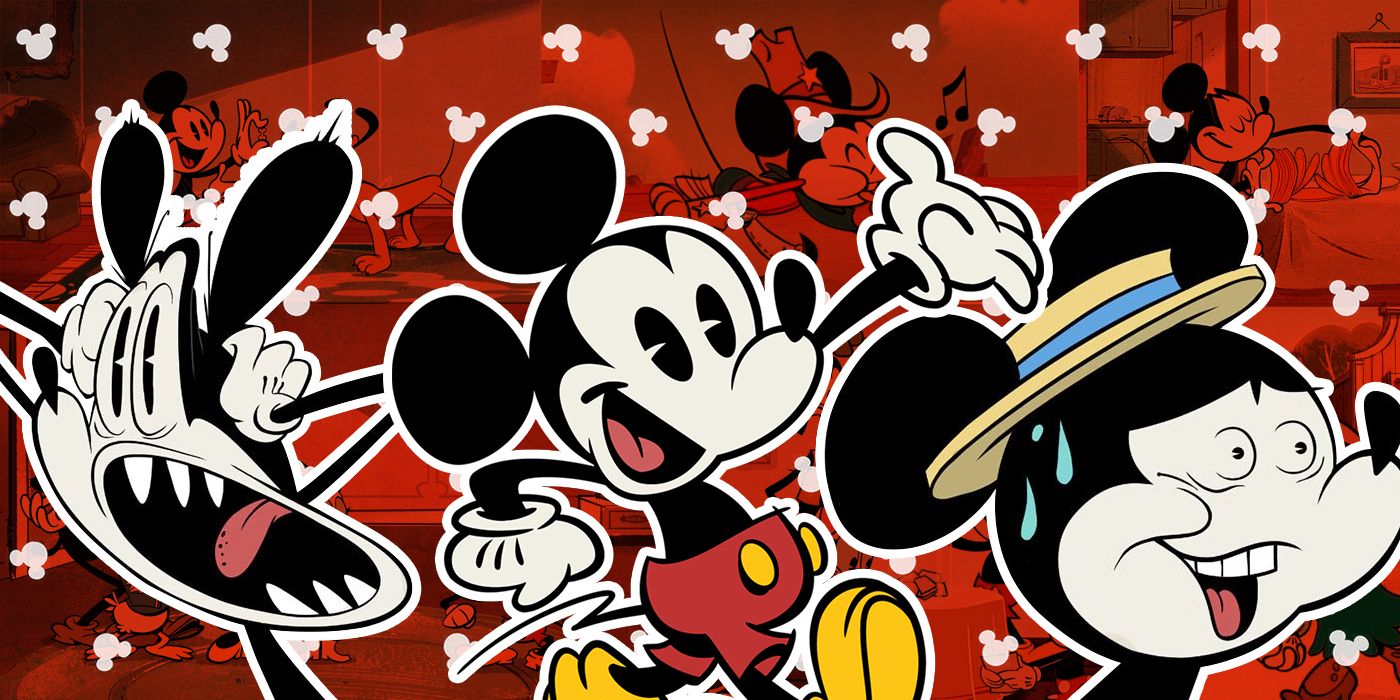He’s the leader of the club that’s made for you and me! Who in the world doesn’t know Mickey Mouse? On top of being the global corporate mascot of the Walt Disney Company, Mickey Mouse is inarguably one of the most widely recognized cartoon characters of all time, whose very image has become synonymous with the medium of animation itself. So, why has he been so boring for most of his career?
As popular as Mickey has been across the generations, his on-screen presence has typically been far more reserved than his fellow ToonTown counterparts. Mickey’s innocence and wholesome nature don’t make him as much of an agent of comedically overblown reactions like Donald Duck, nor do they make him a fitting victim of slapstick punishment like Goofy. Mickey is undoubtedly a cartoon star, but his personality as a character isn’t as animated as his contemporaries.
That is until the arrival of Cartoon Network alumna Paul Rudish. Since 2013, Mickey Mouse and friends have been given new life and a new look in a series of shorts and specials that reinvented the iconic Disney crew for a new generation. Drawing from his experience of working on '90s favorites like Dexter’s Laboratory and The PowerPuff Girls, Rudish helped bring Walt Disney’s classic characters back into the spotlight as animated stars in a slick, kinetic, and even chaotic new vision that draws from a modern sense of humor while still maintaining the familiar personalities the world loves. The Rudish shorts’ greatest accomplishment in this was in how they made Mickey a far more dynamic and even relatable version of himself than he’s ever been in his near century-long career.
For most of his history, Mickey Mouse has been portrayed as the likable everyman and veritable face of the goliath Disney brand. “Classic” Mickey, at his root, is a nice guy who lives life with a positive attitude and constant desire to do the right thing. His noble and inquisitive nature makes him the hero to root for when facing the likes of Peg Leg Pete, exploring the world behind the looking glass, or trying to make his date with Minnie on time. With kind-hearted Mickey as the star, the entertainment value of his early animation career more so came out of the situations he found himself in and the personalities he encountered than it was from Mickey himself or his reactions. He never got too mad or reactionary and was the strait-laced leader and observer to the more explosively silly antics of Donald and Goofy.
The iconography of “classic” Mickey Mouse is what has maintained his popularity over the years as the emblem of family-friendly entertainment. His very image attracts hundreds of thousands of theme parks guests and sells billions of dollars in merchandise every year. Mickey’s lighthearted and calm demeanor position him as an ideally palatable role model and practical moral compass for the entire Disney company and its family audience. That is why in recent decades, he has most typically been featured as the charismatic host of shows like House of Mouse and Disney Park’s Fantasmic, or the embodiment of childhood innocence in preschool targeted programming like Mickey Mouse Clubhouse. In short, “classic” Mickey is a safe and inoffensive cartoon hero and corporate mascot.
The Mickey of the Rudish shorts is, in a word, crazy. He is still the lovable hero he’s always been, but now he is just as over-the-top cartoony and reactionary as the rest of his friends. Where before Mickey was often the well-meaning straight man working off the antics of zanier characters, now he himself is a mouse wildly frantic to do the right thing and have fun, even if it kills him. Rudish’s shorts are driven by the speed and expressiveness of their animation and how Mickey is translated into them make him a better vehicle for cartoon comedy than his classic forerunner. Mickey is now a more dynamic comic foil and victim of slapstick violence with often grotesquely animated reactions and his soft-spoken falsetto voice now given the range to yell, crack, react and scream in ways never heard before. Every aspect of Mickey’s personality has been cranked up to eleven and parts beyond as now he runs through a wild gambit of intense emotions and expressions on a near episode-to-episode basis. He is a sensitive mouse who gets terrified, frustrated, furious, depressed and even downright sadistic in the pursuit of being the nicest guy he can in a chaotic modern world that makes it difficult.
What truly makes Rudish’s Mickey a revelation for the character is his adaptability to fit into modern comedic tastes while not betraying his iconic humble roots. Mickey is now frantic, but still kindhearted. He is sensitive, but selfless. He is eager to please, but ready for adventure. Rudish has not only made Mickey Mouse a more active participant in the comedy and storytelling of his own cartoons, but also translated the familiar characteristics that have made him a household favorite into a more believable and even relatable personality. The Paul Rudish shorts are a reminder that Mickey is not solely an ideal that decorates theme parks or a merchandise-producing machine, but an endearing character that can feel and react in a very human way. Being as noble and true as Mickey Mouse is hard to do in the modern world, even for Mickey Mouse!

